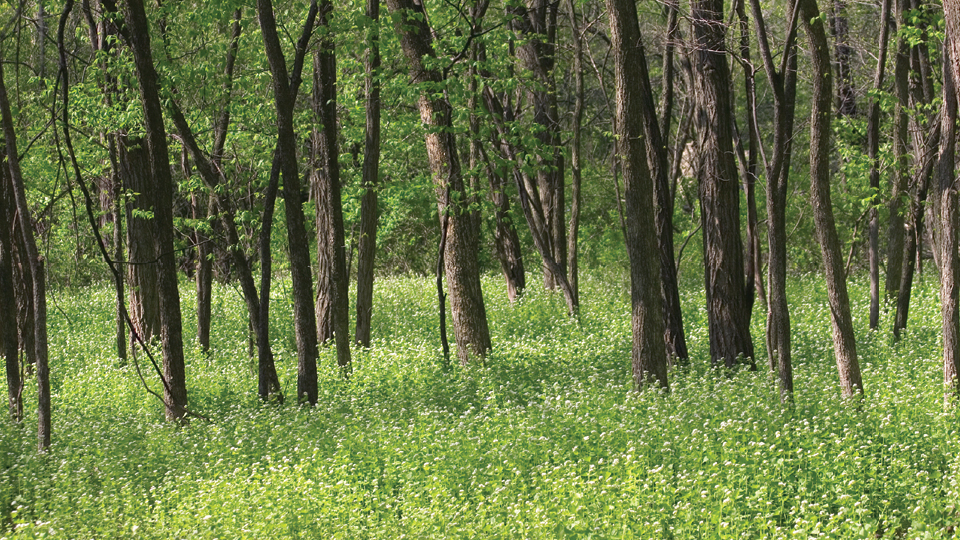by Adam Grybowski
Photo Gallery
30 to 50 percent of carbon in the grasslands soil is lost upon conversion to cultivated land.
The Grasslands
The grasslands of Alberta lock in carbon like a storage tank. Leave it untouched and the grasslands can sequester carbon in the soil for thousands of years. Disturb it though, such as by a tractor’s plow, and the carbon escapes, increasing the element’s concentration in the atmosphere, which scientists say is a driver of climate change.
Worldwide, similar lands store anywhere from 10 to 30 percent of the world’s organic carbon. Limiting its release can be achieved, says Dan Hewins ’07, a University of Alberta postdoctoral fellow, simply through better agricultural practices. Implementing that change, though, is anything but simple.
Livestock is central to Alberta’s farming heritage. Beef is the largest agricultural commodity that comes out of the Canadian province, and more than half of its farms raise cattle. Not that ranchers are making much money. Rising costs and increased regulations are making it harder for them to turn a profit. Many of Alberta’s farms — laid out amongst the oil and gas wells of the province’s grasslands — also grow crops like wheat or canola to support their beef production, and a viable solution for them is to plant more crops and raise fewer cattle.
Cultivating the land may be more profitable than maintaining grazing herds, but it also results in the release of more carbon. “If you’re not willing to pay farmers to preserve the land, they want to maximize production, often at a cost to the land and environment,” Hewins says.
The dry southeast of this large tract of land — the province is slightly smaller than Texas — is marked with low grasses and cacti, almost like a desert. Moving north, the flat expanse becomes rolling hills and the grass becomes denser until clusters of large aspen trees come into view. The Rocky Mountains loom in the west, forming the province’s border.
Hewins roams this land to conduct his research, driving hundreds of miles at a time to visit the more than 100 reference sites set up by the Canadian government. He often finds evidence of the province’s diverse wildlife, including moose, elk, deer, bears, coyotes and wolves. He’s also encountered wild horses in the field, the relatives of the domesticated horses found on some nearby farms. Even the activity of these wild horses causes some carbon to be released, but nowhere near the scale of farmers’ activity.
“Upon conversion to cultivated land, 30 to 50 percent of the carbon in the soils is lost,” says Hewins during a frigid December day from Edmonton, where outside it was zero degrees — quite a change from the sweltering conditions he encountered while conducting research in the desert as a doctoral student at New Mexico State University, which itself was a dramatic shift from the East Coast climate he grew up in.
“That’s one of the beauties of my work — to take my experiences and my knowledge and apply them to different ecosystems,” he says.
Mentoring his Canadian students, Hewins see in them the same connection to the grasslands that he had to one of his research focuses at Rider, garlic mustard, an invasive species thriving in the forests that helped foster Hewins’ love of nature.
The Forest
First found in North America in 1868 in Long Island, N.Y., garlic mustard now grows throughout New Jersey and ranges to Canada in the north, Virginia in the south and as far west as Kansas and Nebraska. Adept at outcompeting other species, garlic mustard thrives in the understories of forests, where it forms dense thickets that choke out indigenous species, altering the landscape that sustains the animal population.
“I walked past this one plant all the time,” Hewins says, “but I had no idea it was this invasive species that was changing the forest that I love. I wanted to better understand how it was doing so well and how to prevent it from altering the richness and diversity of the ecosystem.”
Recognizing Hewins’ curious mind and superior work ethic, Dr. Laura Hyatt, a biology professor who is now the associate dean of the College of Liberal Arts and Sciences, invited him to work in her lab and also conduct research in several local parks — Princeton Battlefield, Rosedale and Washington Crossing among them.
A sophomore and first-year transfer student, Hewins was not only changing schools but also switching majors, from engineering to science. “I have a genuine interest in the environment and spending time in nature and Rider engaged that,” Hewins says. “Going into the field for some of my classes is what galvanized my desire to become a scientist.”
Hewins and Hyatt had observed that garlic mustard thrives in soils packed with high concentrations of nitrogen. The pair devised a research project to study the relationship between the element and the plant, and Hewins applied for and received a Merck/AAAs research grant scholarship to do just that. He dove into the work, dedicating himself to growing plants in the university greenhouse, concocting fertilizers with different levels of nitrogen and measuring how they affected the plants’ growth rate. The research encompassed two summers and about 18 months. “It was my nine to five job in the most literal sense,” Hewins says.
Nitrogen is an essential component of the growth cycle, and while most plants are only able to use one kind of nitrogen well, Hewins discovered that garlic mustard can use multiple kinds. This biological adaptation gives the woodland herb another competitive advantage over other species.
Hewins was first author on the paper that summarized his research, an unusual designation for an undergraduate. “It represented the amount of work he did and his depth of understanding,” Hyatt says. Hewins traveled to Chicago to present the paper’s finding at the Botanical Society of America’s annual meeting and published it in the peer-reviewed journal Biological Invasions.
“Right from the start, Dan showed me he was an able to take direction and make adjustments on the fly,” Hyatt says, “but he was also very eager to be outside and ask questions that moved the research beyond the norm.” Hewins’ eagerness to conduct field research was tested when he began a master’s program at New Mexico State University. The East Coast native was transplanted from New Jersey’s relatively temperate conditions to the unrelenting heat of the southwestern sun.
The Desert
Deserts cover about 40 percent of the biosphere, but scientists are unsure how much carbon is stored in those ecosystems. One way carbon gets into the land is through the decomposition of dead plants. As a Ph.D. student, Hewins spent six years studying the finer mechanisms of how dead plant material decomposes in the desert.
Mathematical models exist that can accurately predict the rate at which the material decomposes and recycles back into the ecosystem. Because precipitation drives the decomposition process, the models falter when examining the desert, Hewins says.
He first toured New Mexico as a prospective graduate student during the winter, leaving a cold, wet Garden State for the bright, warm Land of Enchantment. “I was sold the minute I stepped off the plane,” Hewins says. He would discover that the state’s inviting winter temperature could reach 110 degrees during the summer. “By eight in the morning, the sun was hot on your back,” Hewins says, recalling the summer days of his field research.
Hewins, who earned his Ph.D. in biology with a concentration in ecology and evolutionary biology in 2013, eventually discovered that more moisture exists in the soil than the equation predicts. Windstorms bury plant debris, and when periodic rains saturate the soil, microbes adapted for these conditions become active and start breaking down the plant material. The carbon stored in that material is then recycled back into the earth.
Hewins has been able to integrate his sophisticated knowledge of decomposition into the bigger picture of climate change. For instance, his desert research has helped his work in Alberta. Out on the grasslands, he collects and studies dead plant material to measure its carbon.
“I like to have a target for my research that will have an impact and promote a positive environmental change,” Hewins says. “I'm doing what I can through teaching, mentoring and doing research to provide information that is truthful, valid and can be applied to making an improvement.”




